Soon after the boys and girls file into the gym at McKissack Middle Prep, PE teacher Monica Walker gives them the plan for the next hour.
A mound of hockey equipment stands at the center of the room. Walker yells “Go!” and the kids run for it.
Suddenly the quiet gym is a loud, chaotic play space.
Every student has a stick and ball. Some take powerful swings, trying to hit plastic cones set up at the edges of the room. Others focus on guiding a ball quickly across the room and around the corners.
Nets go up around the perimeter, and kids pair up to play shooter and goalie. The class takes up every part of the gym.
Students squeal with delight when they make a goal and smile triumphantly when they stop another player who’s trying to steal their ball.
Nobody sits on the sidelines.
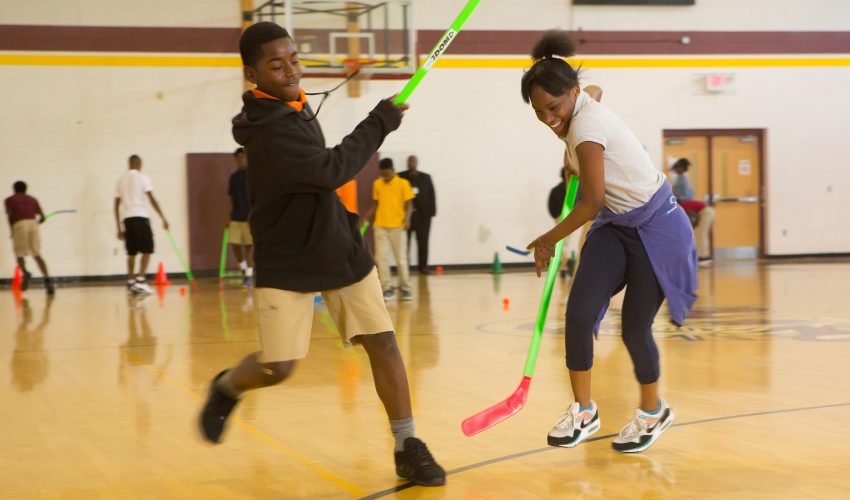
The kids form teams, settling into position. One girl struggling at goalie switches places with a teammate. A boy who has mastered shooting on target explains what he’s doing to another. And just like that, a hockey match is underway.
“That’s how the SPARK curriculum works,” says Walker. “As soon as class starts, they start playing. The directive was, ‘Go wherever you want. If you see a cone, try to hit it with the ball.’
“That individual time allows them to get the feel of the hockey stick in their hands. Everyone starts moving, the volume goes up, and they get comfortable. The more comfortable they get, the more they excel.”
Studies repeatedly show that physical activity does more than get kids’ hearts pumping. It also increases their self-confidence and gets their brains primed to learn. Those additional benefits have schools across Tennessee adjusting their approach to physical education.
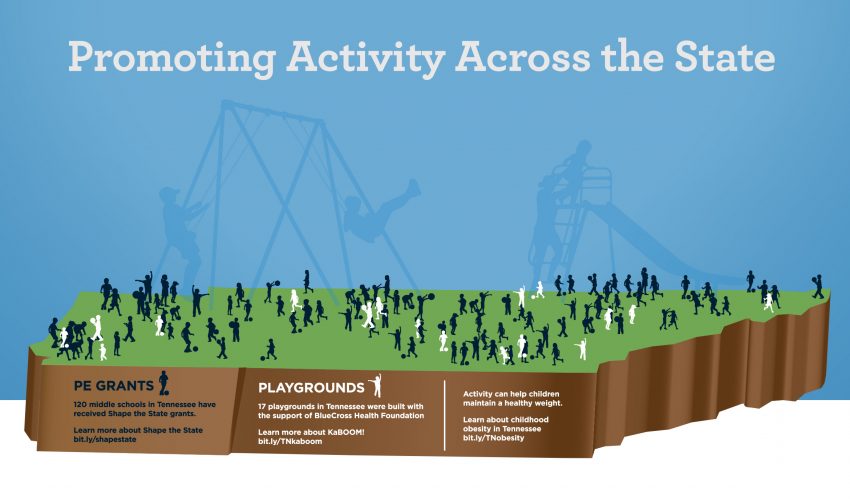
120 middle schools in Tennessee have received Shape the State grants. 17 KaBOOM! playgrounds have been built. Click here to read more.
Schools step up the pace
For many years, educational priorities focused on academic progress, with an emphasis on testing to hold schools accountable. That shift often kept kids glued to their desks for most of the day, while an overload of homework meant they spent more hours sitting still at home.
Add to that the rise of video games and, for some, the lack of time or safe spaces for play. Activity levels steadily dropped among youngsters, while body weight and correlating health problems rose. And for many students, academic performance still did not improve.
Educators and legislators identified the goal: Schools needed to find a balance that better served students, including paying attention to their overall health.
- In 2001, Tennessee’s Department of Education established the Office of Coordinated School Health (OCSH), using a model to improve student health developed by the Centers for Disease Control and Prevention.
- OCSH launched in 10 pilot sites, then went statewide in 2006.
- At the same time, Tennessee mandated schools must provide 90 minutes of physical activity per week for students in kindergarten through 12th grade.
“We know that quality physical activity promotes each student’s physical, mental, emotional and social development,” says Lori Paisley, OCSH executive director.
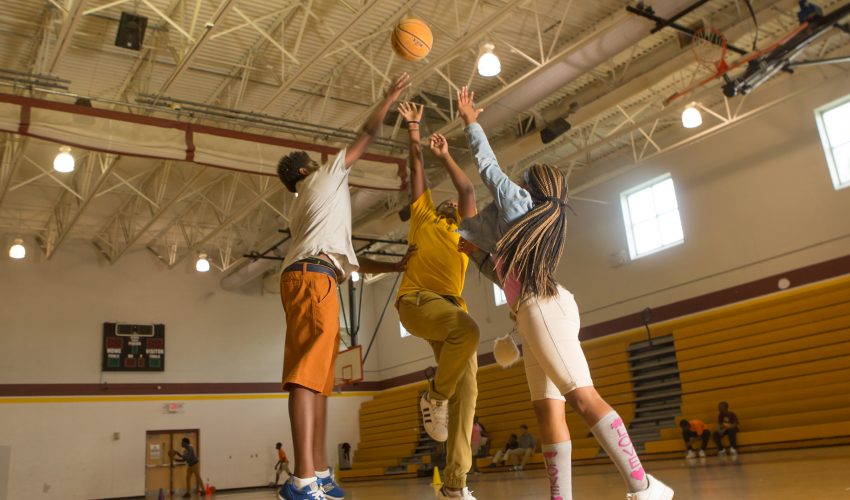
“Healthy students are better learners, and that’s important because academic success is an excellent indicator for the overall well-being of young people and a primary predictor of adult health.”
With the will in place to turn the inactivity trend around, the next step for schools was to motivate students to get moving — ideally even beyond school requirements.
BlueCross Health Foundation stepped in to help, creating the Shape the State initiative in 2011, which includes SPARK as one of its school programs:
- Each year, 20 middle schools in the state receive a grant worth $10,000 to have teachers trained in the widely recognized SPARK PE curriculum
- The schools receive gym equipment that goes along with it, and
- They get a $1,000 stipend to spend on health or wellness programs or activities geared to their specific school needs.

Made for everyone
The students at McKissack Middle Prep in Nashville come from a lower-income neighborhood, many with families that have fallen through the social safety net.
Part of the school’s mission is to provide a nurturing environment that encourages its students to excel. To achieve that goal, Principal Thomas Chappelle points out that health and wellness have to be a priority.
“At McKissack we take a ‘Whole Child, Whole School’ approach,” he says. “We want to get kids engaged in all aspects of school, and we use personalized learning in our academic courses because we know children learn at different levels. We need to differentiate in our PE program as well. We have to have a class that encourages everyone to participate, have fun, and be excited to have an active lifestyle. The SPARK PE curriculum does that.”
When the school won its Shape the State grant in 2016, it received enough equipment for all of its PE students, a key element to the curriculum’s success. Walker saw the impact immediately.
“When you don’t have a lot of equipment, the boys tend to take over and girls stand on the sidelines,” she says. “Now when we work on skills development, everyone has a ball or stick or paddle.”
“Nobody is sitting out. We play games that are structured so nobody has an advantage.”
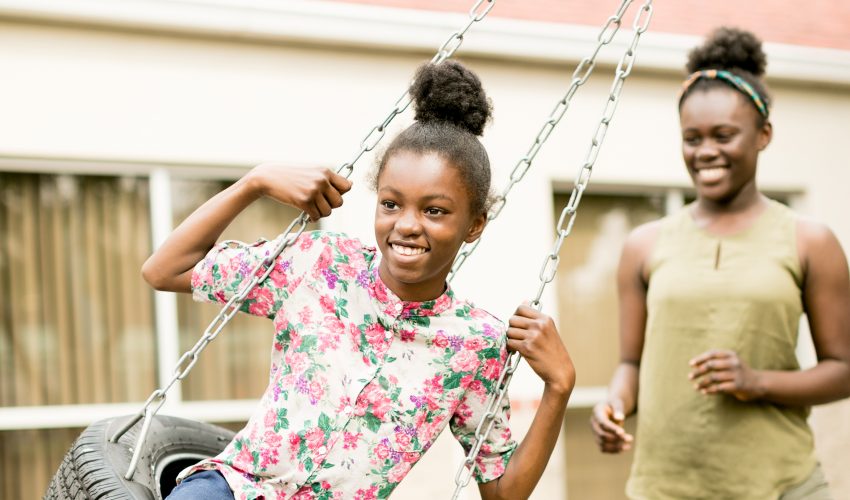
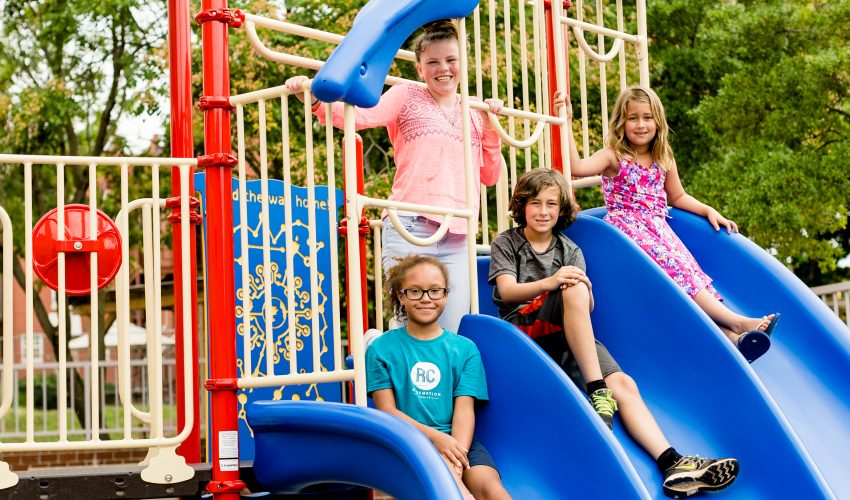

KaBOOM!, another part of the Shape the State initiative, uses community-built playgrounds to encourage activity and improve emotional health in Tennessee. Click here to read more.
For example:
- A basketball version of flag football includes a rule that players must pass or shoot the ball after three steps. That prevents anyone from hogging the ball.
- Plus, any player can snatch a flag from the hip of an opposing player holding the ball, which keeps the kids moving and offers a chance for the less athletically inclined to make important plays.
The results of full participation showed up in the students’ fitness assessments.
“Kids who had to sit down after five laps of running before are now doing 20 laps,” Walker says proudly. That progress in fitness offers a foundation for the school to build on.
“In order for academics to thrive, the students have to feel good,” says Chappelle. “They have to be healthy so that they can function, but there’s also a social and emotional part of making students successful.”
“We strive to make kids feel good about themselves.”
“Often the positive things they get in PE class carry through the day.”
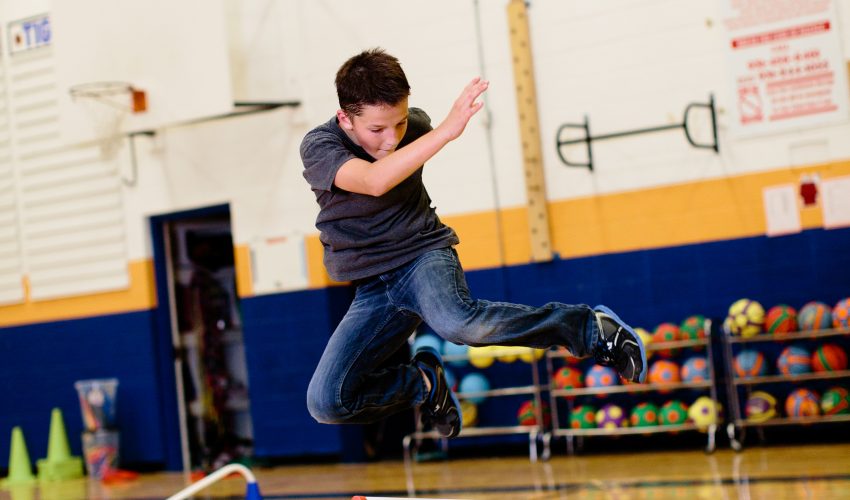
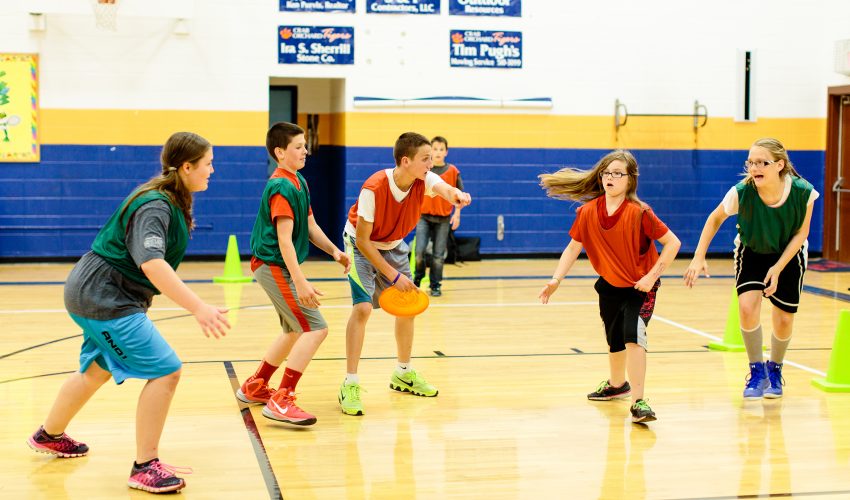
Click here to read about how SPARK gets kids moving in Cumberland County.
Encouragement and inclusion
In Chattanooga, the program serves another type of student. Skyuka Hall teaches children who have learning challenges due to autism, ADHD and medical issues.
Studies have shown physical activity can be a valuable educational tool for students who learn differently.
Dean of Academic Affairs Dr. Lindy Blazek came to Skyuka Hall with a background in special education and physical education. She spent 30 years teaching developmentally disabled children in public school and got deeply involved with Special Olympics. She saw the difference sports made in the lives of those athletes and believes Skyuka students can also benefit.


“I’ve always felt that one of the ways to get to the mind is through the body,” she says. “Give students 30 minutes of good physical activity and you will see less attention deficit, less boredom and less inability to stay focused in class.”
Skyuka Hall pushes its students to develop their strengths and take time in areas where they are challenged, a mirror of the SPARK philosophy. Traditional physical education classes, intentionally or not, tend to create division among students by athletic ability, popularity or social skills, while SPARK emphasizes encouragement and inclusiveness.
“One young man on the autism spectrum offers a great example of how the program works for us,” says Dr. Blazek. “Getting him to join in PE before was difficult. He couldn’t handle the noise and the bustle and would shut down. But in a recent class where kids went through an obstacle course on a scooter board, he spent time on the scooter alone at first.”
“He was the last one to go through the course, and all his classmates cheered him on.”
“So we were able to address his social issues, but still have him be part of the class.”
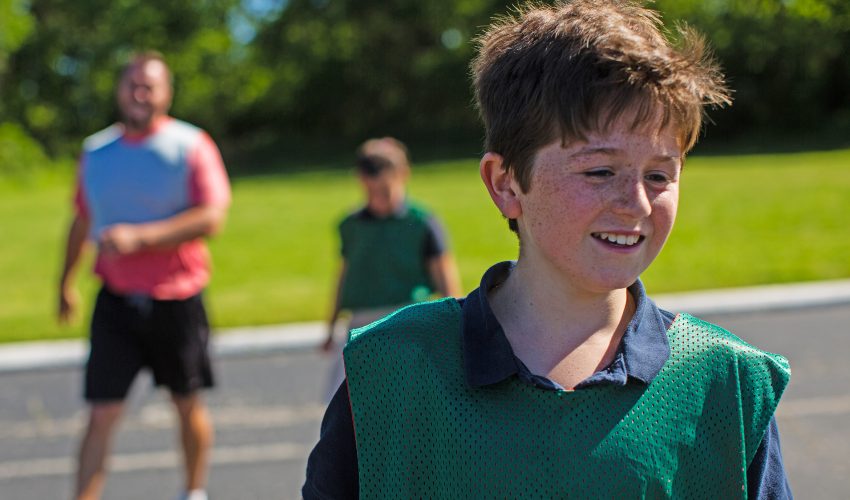
Teachers embrace the possibilities
Even though the SPARK PE curriculum has a strong core philosophy, teachers find it easy to adapt to their own teaching style and to state PE standards. The training covers activities that have been proven to improve motor skills, fitness and athleticism and to maximize student enthusiasm.
As head of the PE department at Grace Christian Academy in Knoxville, Lincoln Thomas wanted to change his school’s approach to PE. A longtime strength and performance coach, he sees the athlete in every child and wants to encourage them to understand how their bodies work. Getting the Shape the State grant in 2016 made the transition smooth, and he was particularly pleased to note the attention paid to developing proper form and body awareness.

“The curriculum really laid the foundation for our program,” he says. “Our PE instructor places a lot of emphasis on progressive development, based on his education in kinesiology (the study of the mechanics of body movements) and biomechanics.”
“For example, we might show a child how they can improve their running just by changing the way they position their feet.”
“SPARK gave us an easy outline of how to apply the plan without having to rewrite everything we had in place. So kids see that they can play the games they love and have fun, but they also learn how their bodies move.”
Thomas sees the impact of long hours on a computer or smartphone on kids’ bodies, leading them to look down and settle into a closed posture. He sees the damage done to a developing body when a child gets pushed to focus on a single sport. He worries that the next generation is less fit than generations past and will grow into adults with aching knees and bad backs, furthering a decline in health and fitness.
“Any time we can teach kids how to open their body up to better posture, to move properly, we do a long-term service,” he says. “The SPARK PE curriculum allows us to do that, using lots of different activities and games, and to involve everyone.”

The bigger picture
Shape the State and SPARK PE both launched in response to the problem of increasing childhood obesity.
Additionally, the state has seen a rise in the rate of chronic diseases among students, including:
- Diabetes
- Asthma
- ADHD/ADD and
- Severe allergies.
Improving fitness through regular activity can reduce symptoms for all of those conditions and is specifically tied to improvements for those with diabetes.

As another part of the Shape the State initiative, GoNoodle creates videos kids want to watch. Click to read how.
Physical movement can affect the brain’s physiology by increasing:
- Growth in the number and size of small blood vessels in the brain
- Blood flow
- Oxygenation
- Production of neurotrophins, proteins that prompt the survival, development and function of brain cells
- Growth of nerve cells in the hippocampus (center of learning and memory), neurotransmitter levels (brain chemicals that communicate information throughout our brain and body)
- Development of nerve connections
- Density of neural network
- Brain tissue volume
These physiological changes are associated with:
- Increased attention
- Information processing, storage and retrieval
- Coping
- Positivity
- Cravings and pain reduction
Getting children to embrace exercise and movement ultimately became bigger than that, though.
Schools in Tennessee worked to incorporate physical activity even beyond school hours with:
- Running clubs that are open to all students
- Walk to School Day
- Bike safety training programs and more.
Parents are also encouraged to join their children in activities, with the hope that healthy habits start forming throughout the community.
“I’ve seen how SPARK starts the process,” says McKissack Middle Prep Principal Chappelle. “When kids have a successful day, they go home and tell their parents. SPARK makes their day better. They enjoy school, and they bring that positivity back to their communities.”
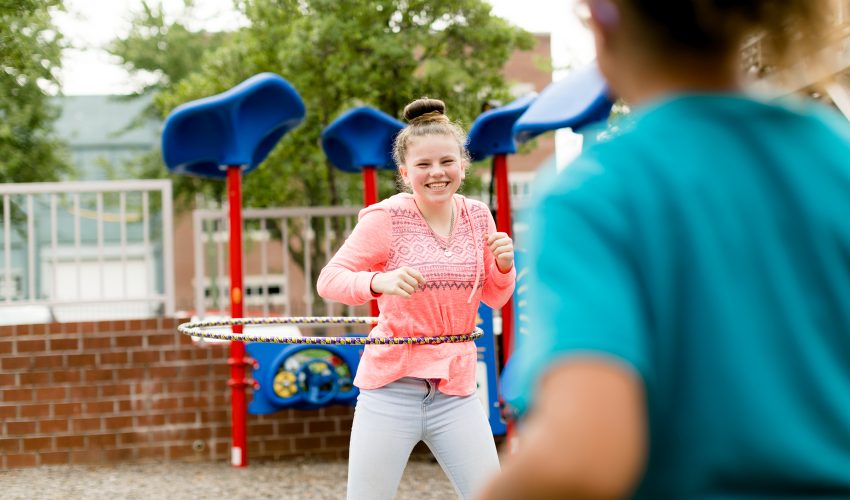


Click here to read how KaBOOM! uses community-built playgrounds to encourage activity and improve emotional health in Tennessee.


